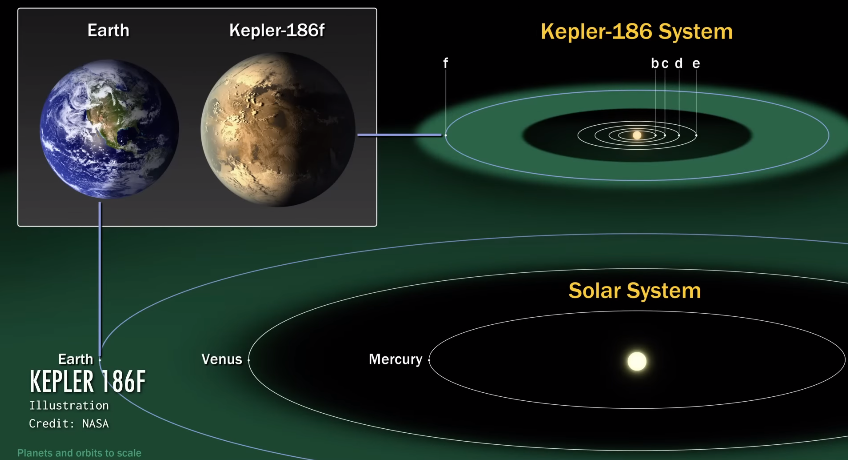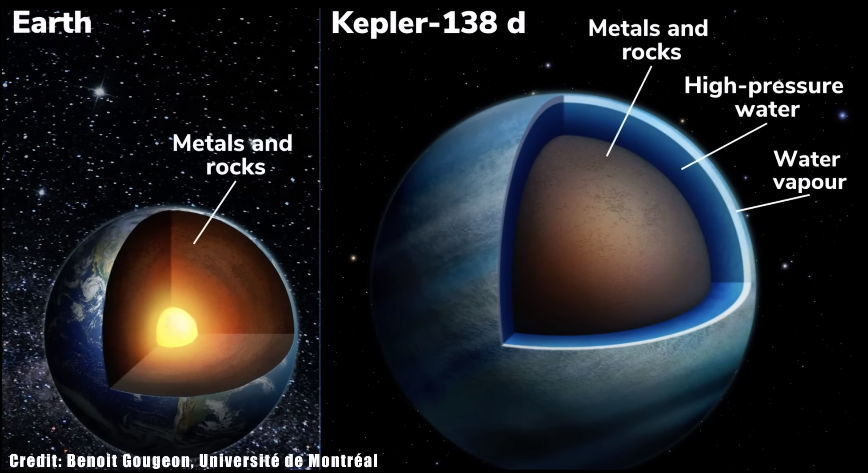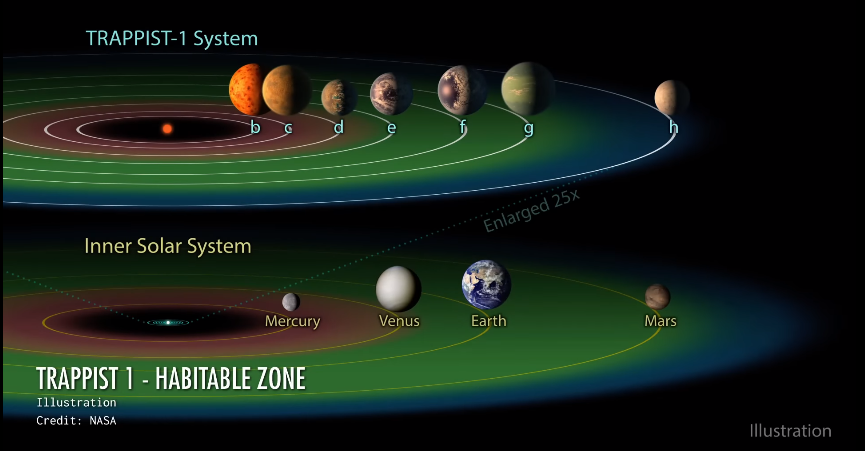Astronomers have now discovered two super Earth and more than 5000 planets which are around other stars. Astronomers call them exoplanets. If there are so many, you can guess out of them some are small some are big same are about which we know a lot they are familiar and some are absolutely amazing. A little time before astronomers have discovered to such planets which astronomers call super earth. They are a little bigger than earth, but most of its water.
5000 Exoplanets
Planets are not in our solar system only In fact now we know the planets are present around almost every stars. These planets which are present around other stars are called exoplanets or extrasolar planets by astronomers. It is difficult to find them rather than confirm detection of exoplanets took place in the 1990’s for the first time.
But why is it difficult to detect them?
The size of the planets is relatively less and also very faint because they reflect the visible light. Another reason it’s not only on this planets faints but a bright star is also present alongside them. That’s why it has been difficult to find these planets.
But now our techniques have become so sophisticated that we can discover more exoplanets. In fact up till now, the middle of 2023, more than 5483 exoplanets have been discovered, and their number is increase every day. There are approximately more than 9000 candidates which can be exoplanets, but not confirmed as yet. There are eight or if you ask me, nine planets in our solar system, according to me, Pluto still a planet.

Here we are talking about thousands of numbers, but all these planets are in our sun’s neighbourhood.

Our guess is there are more than 1 trillion planets in our own galaxy.
As we said this few thousand planners is just that tip of the iceberg. But we get to know a lot from these also. Yeah, there are many exoplanets and many of their names are given through different catalogs.
Pakistan Exoplanets
There are many exoplanets and many of their names are given through different catalogs but the International astronomical union official body which gives name to different thing regarding astronomy some time ago, ask different countries to name specific exoplanets. So Pakistan named the exoplanet as “Perwana” and a start around which it orbits as “Shama”.
Transit method to find exoplanets.
The most of the names of your favorite exoplanet start with Kepler for example Kepler186F.

This is very interesting exoplanet

The reason Kepler space telescope discovered most of the exoplanets.
It used a wonderful technique called transit matter or eclipsing mattered. In fact, this Telescope was sent only to use this technique. By the way this telescope was in space from 2009 to 2018 and it discovered several thousand exoplanets.
But its main technique is if the star is in our line of sight, and when the planet orbiting if it comes in front, there is a dip in the light of the start then we see it. We will not see the planet of we will see a little dip in the light. From that, we can derive that probably there is a planet present there.
Now you are seeing an animation that exoplanet this method. Here you can see a star and remember our telescopes, only see the light of the star. When the planet orbiting the star passes through the front of it we see a dip in the light, meaning the light of the star decreasing a little. This is a small graph on the left side which is telling us about the light of the star. Now this dip its shape, and how big is that dip gives us a lot of information.
For example, this is another animation which is showing the dips of two different size planets. If the planet is small the dip of the star’s light will be less and if the planet a little big it will be a little more. This is a powerful technique which gives us a lot of information.
But some among you must be thinking, one minute, to detect this type of planets, your orientation should be such that the planet passes in front of the star. But you don’t have a preferred orientation in space. If the other solar system in face on your will not see the dip. Absolutely correct!
This technique that transit technique, that transit method or the eclipsing method works only for edge on systems. But through statistics, we can find out on an average, how many system on edge on and how many system are we missing. This way we can get the total number of planets.
This is such terrific method because of which Kepler space telescope for example, there are many other telescopes which use this method, but the only aim of the Kepler space telescope was to measure these dips.
Remember there were many candidates which had not be confirmed. The reason is the dips are there but they can be for some other reason also so astronomers want that the planet should pass (in front of the star) at least two times.
For example if someone tries to see our solar system in the same way and detects our earth. The earth will pass the sun once in a year and during 2 years you will see the dip two times. If you are detecting Jupiter it takes about 12 years for it (Jupiter) to go around our sun so the 2nd dip will come 12 years after the first dip. For this reason, we have to wait for the second dip of many of the candidates.
Kepler 138 System
As you can imagine, if a star has more than one planet, we will see more dips.
This is an animation of a system in which there are 3 planets and you can see a different dips of brightness as these planets pass in front of their star. Astronomers call this graph of brightness “Light Curves” and then they talk about the dips.
It is terrific that we can tell about different planets about their presence and their sizes with the measurement of these light curves.
This brings us to specific system about which I wanted to talk today Kepler 138. This is at a distance of 218 light years away from us. With respect to the scale of the universe, this system is present nearby. This star is a red dwarf.
This means it is smaller in size from our sun its mass is less than our sun and it is relatively colder than our sun. By the way, these type of stars the red dwarf are found in large number in the universe. We know through the Kepler space telescope that there planets present around it.
Today we know there are 4 planets around it. Astronomers give them the names by convention when the first planet is discovered it is giver the name the small size English ‘b’. It means the first planet discovered is called Kepler 138-b.
The 2nd planet discovered is ‘c’ the third ‘d’ and after that ‘e’. This conversation of names applies to all exoplanets. Next time if you hear exoplanets 186f you will know how many planets have already discovered in the system.
Water on two Super Earth.
This Kepler 138 (Super Earth) system is very interesting. Astronomers have recently used to Hubble Space Telescope and another retired telescope (named Spitzer) to study two of its planets which are Kepler 138-c (1st Super Earth) and 138-d (2nd Super Earth). astronomers think their size is three times the size of our earth.
These types of planets are called super earth by astronomers. They are not heroes of ‘Marvel’ though their names look somewhat like that. It only means they are larger than earth but smaller than Neptune and Uranus. This category This type of stars are not present in our solar system, but we know that in our universe

In the planets discovered so far these types of super earth are present. Now astronomers have not detected them directly but they have calculated the density of the planets through their size, their value, and their mass. It came to be know that Kepler 138-c (1st Super Earth) and 138-d (2nd Super Earth) the two planets in this system they are almost the same.
They are three times more in size and two times more in mass than the earth that’s why also called super earth. Astronomers thought that these super earth are like earth made of rocks and have metals in it just a little bigger. But the studies of Kepler 138 C (1st Super Earth) and 138 D (2nd Super Earth) (super earth)

tell us that their density is less than rocks but more than gases such as hydrogen and helium. Astronomers think that the planet Kepler 138-c (1st Super Earth) and 138-d (2nd Super Earth) they are mostly made of water. Both of them are very near their star.
This is not such that there may be live here. They are not in a habitable zone. In fact they must be very hot. One of them Kepler 138-c takes 14 days to orbit its star and the other one Kepler-d takes 23 days to go around it. So the astronomers think that the water over me there is not in liquid form but mostly in the form of steam.
Rather there will be so much pressure, so the idea is even if there is water below that will be in very high-pressure environment, and there is another state supercritical fluid, it is assumed the water over there will be in this state.
Maybe there are no chance of life there but this is the first time we have discovered exoplanets, which are mostly of water. Before you become a little disappointed let me tell you there is a fourth planet also in the system which is named Kepler 138 e and is at the edge of its habitable zone.
A habitable zone, basically means that it is at such a distance from its star can stay in liquid form on its surface Unfortunately we do not have much information of the planet yet, but maybe there is life present in the system.
Before I finish here I have to necessarily talk about the James Webb Space telescope. Remember, I said observation that Kepler 138 system is mostly water is not direct observation. This was estimated from its mass and size.
James Webb and WASP-39b
But the James Webb space telescope has the capacity to study the atmosphere of the exoplanets and its basic techniques is when the planet passes in front of its star the light of the atmosphere passes through its (planet) atmosphere. The instruments of the James Webb Space Telescope work on such wavelength, such light, which enables it to study the light which is passing through the planet’s atmosphere. Then it can find out which molecules are present in the atmosphere of the planet.

There is a system WASP 39-B
The was received in the first results of James Webb. Now more analysis of it has come. This is not a planet interesting for life (presence). This was interesting because it was a test case, what type of elements and what type of molecules can the James Webb Space Telescope detect in its atmosphere.

You are seeing the results here. It saw and in the atmosphere of planet WASP 39 its discovered sodium, potassium, carbon dioxide, carbon monoxide and water. One interesting thing it discovered Sulfur dioxide also.
Why is it Interesting?
The reason is this is not directly formed in the atmosphere of the planet but indirectly when the light of the star interacts in its atmosphere sulfur dioxide is formed through that. This is the first time that photochemistry has been discovered in the atmosphere of another planet (exoplanets or super earth).
Conclusion
I’m Sure that many of you must be thinking right now, one minute, tell us about the Trappist One System. Trappist One is of particular interest to us

Because it has at least three earth sized planets that are within the habitable zone. And the James Webb Space Telescope has already observed Trappist One. As far as I know, the results have not been made public yet. But don’t pin all you hopes on Trappist One only because the James Webb Space Telescope has just started. Slowly Slowly we will know about more exoplanets.
Who knows there may be more such exoplanets where the signs of life are more prominent. Humans are to blamed (in a way) for many things, what we are doing to the climate, wars etc etc but this thing the way we are discovering other planets, this is a thing of pride for humans. In a sense, we are living in a special time because maybe this is the first time we are able to discover the signs of life on some other exoplanet.

